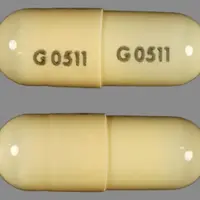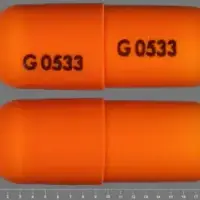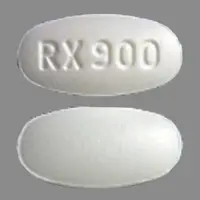Generic name: antara
Availability: Prescription only
Pregnancy & Lactation: Risk data available
Brand names: Fenofibrate, Fenoglide, Tricor, Triglide, Lipofen
What is Fenofibric acid/fenofibrate (monograph)?
Introduction
Fenofibric acid (active moiety) and fenofibrate are antilipemic agents; fibric acid derivatives.
Uses for Fenofibric Acid/Fenofibrate
Dyslipidemias
Adjuncts to dietary therapy to decrease elevated serum total and LDL-cholesterol, triglyceride, and apolipoprotein B (apo B) concentrations, and to increase HDL-cholesterol concentrations in the management of primary hypercholesterolemia and mixed dyslipidemia, including heterozygous familial hypercholesterolemia and other causes of hypercholesterolemia. Additive antilipemic effects when used concomitantly with other antilipemic agents (e.g., colesevelam, ezetimibe).
Adjuncts to dietary therapy in the management of severe hypertriglyceridemia. Efficacy in reducing risk of pancreatitis in patients with marked elevations in triglyceride concentrations (i.e., >2000 mg/dL) not established.
Effects on cardiovascular morbidity and mortality or noncardiovascular mortality not established. (See Effects on Morbidity and Mortality under Cautions.)
AHA/ACC cholesterol management guideline states that lifestyle modification is the foundation of cardiovascular risk reduction. If pharmacologic therapy is needed, statins are first-line drugs of choice because of their demonstrated benefits in reducing risk of atherosclerotic cardiovascular disease (ASCVD). Nonstatin drugs may be considered as adjunctive therapy in certain high-risk patients, but other drugs (e.g., ezetimibe) are generally recommended. Although fibrates have mild LDL-lowering effects, randomized controlled studies do not support their use as add-on therapy to statins.
If fibrate therapy is necessary in a statin-treated patient, AHA/ACC states that it is safer to use fenofibrate than gemfibrozil because of lower risk of severe myopathy.
Related/similar drugs
atorvastatin, rosuvastatin, simvastatin, Lipitor, fenofibrate, Crestor, VascepaFenofibric Acid/Fenofibrate Dosage and Administration
General
-
Patients should be placed on a standard lipid-lowering diet before initiation of fenofibrate or fenofibric acid therapy and should remain on this diet during treatment with the drug.
-
Monitor serum lipoprotein concentrations periodically during therapy.
Administration
Oral Administration
Administer orally once daily.
Fenofibrate is commercially available as nonmicronized drug in capsules (e.g., Lipofen), nonmicronized drug in tablets (e.g., Fenoglide), micronized drug in capsules (e.g., Antara ), “nanocrystal” drug in tablets (i.e., TriCor) , or “insoluble drug delivery-microparticle (IDD-P)” drug in tablets (i.e., Triglide ). Fenofibric acid is commercially available as delayed-release capsules (e.g., Trilipix) or tablets (e.g., Fibricor). These formulations are not bioequivalent and vary substantially in potency and food effects.
Administer Fenoglide tablets and Lipofen capsules with food. May administer Antara micronized capsules, TriCor tablets, Triglide tablets, Fibricor tablets, and Trilipix delayed-release capsules without regard to meals.
Swallow Antara capsules, Fenoglide tablets, Fibricor tablets, Lipofen capsules, and Trilipix delayed-release capsules intact; do not open, crush, dissolve, or chew.
Dosage
Monitor lipoprotein concentrations periodically; consider reducing dosage in patients whose serum lipoprotein concentrations fall below the desired target range. Discontinue therapy in patients who fail to achieve an adequate response after 2 months of therapy with the maximum recommended dosage.
Commercially available in several different preparations with varying dosage strengths ranging from low-dose (40–67 mg) to higher-dose (120–200 mg) formulations. With exception of generic equivalents, these preparations are not bioequivalent and vary substantially with respect to food effects and potency.
Adults
Dyslipidemias
Primary Hypercholesterolemia and Mixed Dyslipidemia
OralAntara (fenofibrate) micronized capsules: Initially, 130 mg daily.
Fenoglide (fenofibrate) tablets: 120 mg daily.
Fibricor (fenofibric acid) tablets: 105 mg daily.
Lipofen (fenofibrate) capsules: 150 mg daily.
Fenofibrate micronized capsules: 200 mg daily.
TriCor (fenofibrate) tablets or generic equivalents: 145 mg daily.
Triglide (fenofibrate) tablets: 160 mg daily.
Trilipix (fenofibric acid) delayed-release capsules or generic equivalents: 135 mg once daily.
Hypertriglyceridemia
OralAntara (fenofibrate) micronized capsules: Initially, 43–130 mg daily.
Fenoglide (fenofibrate) tablets: 40–120 mg daily.
Fibricor (fenofibric acid) tablets: 35–105 mg daily.
Lipofen (fenofibrate) capsules: 50–150 mg daily.
Fenofibrate micronized capsules: 67–200 mg daily.
TriCor (fenofibrate) tablets or generic equivalents: 48–145 mg daily.
Triglide (fenofibrate) tablets: 160 mg daily.
Trilipix (fenofibric acid) delayed-release capsules or generic equivalents: 45–135 mg once daily.
Adjust dosage at intervals of 4–8 weeks until the desired effect on lipoprotein concentrations is observed or maximum recommended dosages are reached.
Prescribing Limits
Adults
Dyslipidemias
Hypertriglyceridemia
OralAntara (fenofibrate) micronized capsules: Maximum 130 mg daily.
Fenoglide (fenofibrate) tablets: Maximum 120 mg daily.
Fibricor (fenofibric acid) tablets: 105 mg daily.
Lipofen (fenofibrate) capsules: Maximum 150 mg daily.
Fenofibrate micronized capsules: Maximum 200 mg daily.
TriCor (fenofibrate) tablets or generic equivalents: Maximum 145 mg daily.
Triglide (fenofibrate) tablets: Maximum 160 mg daily.
Trilipix (fenofibric acid) delayed-release capsules or generic equivalents: Maximum 135 mg once daily.
Special Populations
Renal Impairment
Dyslipidemias
Oral
Reduce initial dosage in patients with mild to moderate renal impairment (estimated GFR 30–59 mL/minute per 1.73 m2); increase only after effects of the drug on renal function and lipid concentrations have been evaluated. Avoid use in patients with severe renal impairment (estimated GFR <30 mL/minute per 1.73 m2).
The following dosage adjustments are recommended in patients with mild to moderate renal impairment:
Antara (fenofibrate) micronized capsules: Initially, 43 mg daily.
Fenoglide (fenofibrate) tablets: Initially, 40 mg daily.
Fibricor (fenofibric acid) tablets: Initially, 35 mg daily.
Lipofen (fenofibrate) capsules: Initially, 50 mg daily.
Fenofibrate micronized capsules: Initially, 67 mg daily.
TriCor (fenofibrate) tablets or generic equivalents: Initially, 48 mg daily.
Triglide (fenofibrate) tablets: Manufacturer states to avoid use in patients with mild to moderate renal impairment.
Trilipix (fenofibric acid) delayed-release capsules: Initially, 45 mg once daily.
Geriatric Patients
Select dosage based on renal function. (See Renal Impairment under Dosage and Administration and also under Cautions.) No dosage adjustment is required in geriatric patients with normal renal function.
Warnings
Contraindications
-
Patients with severe renal impairment, including those undergoing dialysis.
-
Active liver disease, including primary biliary cirrhosis and unexplained and persistent liver function abnormality.
-
Preexisting gallbladder disease.
-
Nursing women.
-
Known hypersensitivity to fenofibrate or fenofibric acid.
Warnings/Precautions
Sensitivity Reactions
Hypersensitivity Reactions
Acute hypersensitivity reactions including angioedema and anaphylaxis reported in some patients receiving fenofibrate. Some cases were life-threatening and required emergency treatment.
If a patient develops signs and symptoms of an acute hypersensitivity reaction, discontinue drug and seek immediate medical attention.
Dermatologic Reactions
Severe cutaneous reactions including Stevens-Johnson syndrome, toxic epidermal necrolysis, and DRESS (drug reaction and eosinophilia and systemic symptoms) reported during postmarketing experience with fenofibrate.
If such reactions occur, discontinue drug and treat patients appropriately.
Effects on Morbidity and Mortality
Effects on cardiovascular morbidity and mortality and noncardiovascular mortality not established.
In several randomized, placebo-controlled studies in patients with type 2 diabetes mellitus, fenofibrate did not substantially reduce the risk of cardiovascular events (e.g., nonfatal MI, nonfatal stroke, cardiovascular death) despite favorable effects on plasma lipid concentrations. Combination therapy with fenofibrate and a statin (simvastatin) did not substantially reduce rate of major adverse cardiovascular events (i.e., nonfatal MI, nonfatal stroke, fatal cardiovascular events) compared with statin monotherapy.
Because fenofibrate and fenofibric acid are chemically, pharmacologically, and clinically similar to other fibric acid derivatives (e.g., gemfibrozil, clofibrate [no longer commercially available in US]), adverse findings with these other drugs (i.e., increased incidence of cholelithiasis, cholecystitis requiring surgery, postcholecystectomy complications, malignancy, pancreatitis, and gallbladder disease, and increased overall mortality) also may apply to fenofibrate and fenofibric acid.
Musculoskeletal Effects
Serious muscle toxicity, including myopathy and rhabdomyolysis, reported in patients receiving fibric acid derivatives. Risk appears to be increased in geriatric patients and in patients with diabetes mellitus, renal impairment, or hypothyroidism. Concomitant use with statins or other drugs (e.g., colchicine) also may increase risk. (See Interactions.)
Monitor CK (CPK) concentrations periodically in patients reporting adverse musculoskeletal effects. Consider myopathy in any patient who develops diffuse myalgias, muscle tenderness or weakness, and/or marked increases in CK concentrations. (See Advice to Patients.)
Discontinue therapy if serum CK concentrations become markedly elevated or if myositis/myopathy is suspected or diagnosed.
Hepatic Effects
Dose-related elevations in serum aminotransferase (i.e., AST, ALT) concentrations >3 times the ULN reported. Concentrations usually return to pretreatment values during continued therapy or following drug discontinuance.
Chronic active hepatitis and cholestatic hepatitis have occurred as early as several weeks and as late as several years after initiation of therapy; cirrhosis associated with chronic active hepatitis reported rarely.
Perform liver function tests prior to initiating therapy and periodically thereafter. If serum aminotransferase concentrations of ≥3 times the ULN persist, discontinue therapy.
Renal Effects
Transient elevations of Scr reported. Elevations generally stable over time, with no evidence of continued increases following long-term therapy; elevations usually returned to baseline following discontinuance of therapy. Clinical importance not known.
Cholelithiasis
May increase cholesterol excretion in bile, resulting in cholelithiasis. Discontinue therapy if gallbladder studies indicate presence of gallstones.
Pancreatitis
Pancreatitis reported with fenofibrate, fenofibric acid, and other fibric acid derivatives; may be due to progression of hypertriglyceridemia (i.e., resulting from failure of response to therapy in patients with severe hypertriglyceridemia), a direct effect of the drug, or a secondary effect (e.g., biliary tract stone or sludge formation leading to obstruction of the common bile duct).
Hematologic Effects
Mild to moderate decreases in hemoglobin, hematocrit, and WBC counts reported; generally stabilize during long-term therapy.
Thrombocytopenia and agranulocytosis also reported.
Monitor blood cell counts periodically during first 12 months of therapy.
Thromboembolism
Increased incidence of venous thromboembolic events (e.g., DVT, PE, thrombophlebitis) observed with fibric acid derivatives.
Decreased HDL-cholesterol Concentrations
Paradoxical decrease in HDL-cholesterol concentrations (e.g., to as low as 2 mg/dL), accompanied by a decrease in apolipoprotein A1 concentrations, reported. Occurred as early as 2 weeks to as late as several years after initiation of therapy. HDL-cholesterol concentrations rapidly returned to baseline and remained at normal levels following discontinuance of therapy. Clinical importance not known.
Determine HDL-cholesterol concentrations within the first few months after initiating therapy. If concentrations are severely depressed, permanently discontinue drug and monitor until HDL-cholesterol concentrations return to normal.
Specific Populations
Pregnancy
Insufficient data in pregnant women. In animal reproduction studies, no evidence of embryofetal toxicity.
Use during pregnancy only if potential benefits justify potential risks to fetus.
Lactation
Potential for serious adverse effects in nursing infants. Contraindicated in nursing women; discontinue nursing or the drug.
Pediatric Use
Safety and efficacy not established in children <18 years of age.
Geriatric Use
Risk of adverse effects may be increased in patients ≥65 years of age because of potentially decreased renal function in these patients. Select dosage based on renal function. (See Geriatric Patients and also Renal Impairment under Dosage and Administration.) Consider monitoring renal function.
Hepatic Impairment
Not evaluated in patients with hepatic impairment.
Renal Impairment
Reduce dosage in patients with mild to moderate renal impairment; avoid use in patients with severe renal impairment. (See Renal Impairment under Dosage and Administration.)
Monitor renal function in patients with preexisting renal impairment; consider monitoring renal function in patients at risk for developing renal impairment (e.g., geriatric patients, those with diabetes mellitus).
Common Adverse Effects
Fenofibrate: Abnormal liver function tests (e.g., increased ALT and/or AST), respiratory disorder, abdominal pain, back pain, headache, increased CK concentrations, diarrhea, nausea, rhinitis, constipation, asthenia, flu syndrome.
Fenofibric acid (alone or in combination with a statin): Headache, back pain, nasopharyngitis, nausea, myalgia, diarrhea, upper respiratory tract infection.
How should I use Fenofibric acid/fenofibrate (monograph)
General
-
Patients should be placed on a standard lipid-lowering diet before initiation of fenofibrate or fenofibric acid therapy and should remain on this diet during treatment with the drug.
-
Monitor serum lipoprotein concentrations periodically during therapy.
Administration
Oral Administration
Administer orally once daily.
Fenofibrate is commercially available as nonmicronized drug in capsules (e.g., Lipofen), nonmicronized drug in tablets (e.g., Fenoglide), micronized drug in capsules (e.g., Antara ), “nanocrystal” drug in tablets (i.e., TriCor) , or “insoluble drug delivery-microparticle (IDD-P)” drug in tablets (i.e., Triglide ). Fenofibric acid is commercially available as delayed-release capsules (e.g., Trilipix) or tablets (e.g., Fibricor). These formulations are not bioequivalent and vary substantially in potency and food effects.
Administer Fenoglide tablets and Lipofen capsules with food. May administer Antara micronized capsules, TriCor tablets, Triglide tablets, Fibricor tablets, and Trilipix delayed-release capsules without regard to meals.
Swallow Antara capsules, Fenoglide tablets, Fibricor tablets, Lipofen capsules, and Trilipix delayed-release capsules intact; do not open, crush, dissolve, or chew.
Dosage
Monitor lipoprotein concentrations periodically; consider reducing dosage in patients whose serum lipoprotein concentrations fall below the desired target range. Discontinue therapy in patients who fail to achieve an adequate response after 2 months of therapy with the maximum recommended dosage.
Commercially available in several different preparations with varying dosage strengths ranging from low-dose (40–67 mg) to higher-dose (120–200 mg) formulations. With exception of generic equivalents, these preparations are not bioequivalent and vary substantially with respect to food effects and potency.
Adults
Dyslipidemias
Primary Hypercholesterolemia and Mixed Dyslipidemia
OralAntara (fenofibrate) micronized capsules: Initially, 130 mg daily.
Fenoglide (fenofibrate) tablets: 120 mg daily.
Fibricor (fenofibric acid) tablets: 105 mg daily.
Lipofen (fenofibrate) capsules: 150 mg daily.
Fenofibrate micronized capsules: 200 mg daily.
TriCor (fenofibrate) tablets or generic equivalents: 145 mg daily.
Triglide (fenofibrate) tablets: 160 mg daily.
Trilipix (fenofibric acid) delayed-release capsules or generic equivalents: 135 mg once daily.
Hypertriglyceridemia
OralAntara (fenofibrate) micronized capsules: Initially, 43–130 mg daily.
Fenoglide (fenofibrate) tablets: 40–120 mg daily.
Fibricor (fenofibric acid) tablets: 35–105 mg daily.
Lipofen (fenofibrate) capsules: 50–150 mg daily.
Fenofibrate micronized capsules: 67–200 mg daily.
TriCor (fenofibrate) tablets or generic equivalents: 48–145 mg daily.
Triglide (fenofibrate) tablets: 160 mg daily.
Trilipix (fenofibric acid) delayed-release capsules or generic equivalents: 45–135 mg once daily.
Adjust dosage at intervals of 4–8 weeks until the desired effect on lipoprotein concentrations is observed or maximum recommended dosages are reached.
Prescribing Limits
Adults
Dyslipidemias
Hypertriglyceridemia
OralAntara (fenofibrate) micronized capsules: Maximum 130 mg daily.
Fenoglide (fenofibrate) tablets: Maximum 120 mg daily.
Fibricor (fenofibric acid) tablets: 105 mg daily.
Lipofen (fenofibrate) capsules: Maximum 150 mg daily.
Fenofibrate micronized capsules: Maximum 200 mg daily.
TriCor (fenofibrate) tablets or generic equivalents: Maximum 145 mg daily.
Triglide (fenofibrate) tablets: Maximum 160 mg daily.
Trilipix (fenofibric acid) delayed-release capsules or generic equivalents: Maximum 135 mg once daily.
Special Populations
Renal Impairment
Dyslipidemias
Oral
Reduce initial dosage in patients with mild to moderate renal impairment (estimated GFR 30–59 mL/minute per 1.73 m2); increase only after effects of the drug on renal function and lipid concentrations have been evaluated. Avoid use in patients with severe renal impairment (estimated GFR <30 mL/minute per 1.73 m2).
The following dosage adjustments are recommended in patients with mild to moderate renal impairment:
Antara (fenofibrate) micronized capsules: Initially, 43 mg daily.
Fenoglide (fenofibrate) tablets: Initially, 40 mg daily.
Fibricor (fenofibric acid) tablets: Initially, 35 mg daily.
Lipofen (fenofibrate) capsules: Initially, 50 mg daily.
Fenofibrate micronized capsules: Initially, 67 mg daily.
TriCor (fenofibrate) tablets or generic equivalents: Initially, 48 mg daily.
Triglide (fenofibrate) tablets: Manufacturer states to avoid use in patients with mild to moderate renal impairment.
Trilipix (fenofibric acid) delayed-release capsules: Initially, 45 mg once daily.
Geriatric Patients
Select dosage based on renal function. (See Renal Impairment under Dosage and Administration and also under Cautions.) No dosage adjustment is required in geriatric patients with normal renal function.
What other drugs will affect Fenofibric acid/fenofibrate (monograph)?
Drugs Metabolized by Hepatic Microsomal Enzymes
Fenofibrate and fenofibric acid are mild to moderate inhibitors of CYP2C9 and weak inhibitors of CYP isoenzymes 2C8, 2A6 and 2C19; do not inhibit CYP isoenzymes 3A4, 2D6, 2E1, or 1A2 in vitro.
Specific Drugs
|
Drug |
Interaction |
Comments |
|---|---|---|
|
Anticoagulants, oral (e.g., warfarin) |
Prolongation of PT/INR and potential increased risk of bleeding |
Use concomitantly with caution Monitor PT/INR frequently until stable and adjust anticoagulant dosage as necessary |
|
Antidiabetic agents (i.e., glimepiride, metformin, rosiglitazone) |
Glimepiride: Increased systemic exposure and peak plasma concentrations of glimepiride; glucose concentrations substantially reduced; pharmacokinetics of fenofibrate not altered Metformin, rosiglitazone: Slight alterations in pharmacokinetics of each drug |
|
|
Bile acid sequestrants (i.e., cholestyramine, colestipol) |
Possible decreased absorption of fenofibrate or fenofibric acid |
Administer fenofibrate or fenofibric acid 1 hour before or 4–6 hours after the bile acid sequestrant |
|
Colchicine |
Increased risk of myopathy, including rhabdomyolysis |
Use concomitantly with caution |
|
Ezetimibe |
Ezetimibe with atorvastatin: Increased peak plasma concentrations and systemic exposure of ezetimibe; pharmacokinetics of atorvastatin and fenofibric acid not substantially altered |
|
|
HMG-CoA reductase inhibitors (statins) |
Increased risk of adverse musculoskeletal effects (i.e., increased CK, myoglobinuria, rhabdomyolysis) Atorvastatin, fluvastatin, pravastatin, rosuvastatin, simvastatin: Slight alterations in pharmacokinetics of fenofibric acid; more pronounced effects on pharmacokinetics of the statin Possible decreased AUC of atorvastatin; increased peak plasma concentrations and AUC of fluvastatin, pravastatin (and active metabolite), and rosuvastatin; and decreased peak plasma concentrations and AUC of simvastatin (and active metabolite) |
Avoid concomitant use unless potential benefit outweighs risk |
|
Immunosuppressive agents (i.e., cyclosporine, tacrolimus) |
Increased risk of cyclosporine- or tacrolimus-induced nephrotoxicity |
Carefully consider risks versus benefits of concomitant therapy; use lowest effective dosages and monitor renal function |
|
Omeprazole |
Increased peak plasma concentrations of fenofibric acid observed under fasting conditions, but not when fenofibric acid was administered with food; systemic exposure to fenofibric acid not substantially altered |







